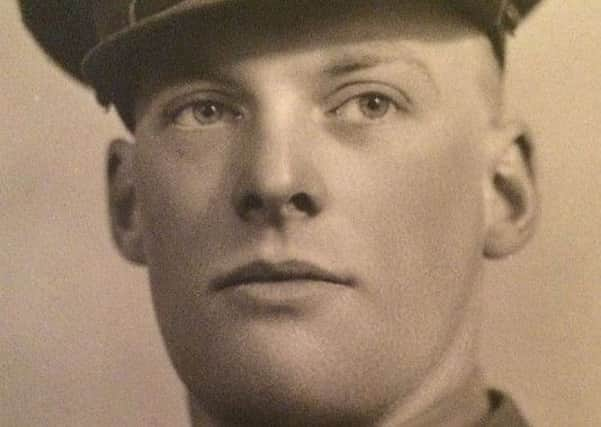Obituary: John Debenham Taylor, intelligence officer


John Debenham Taylor enjoyed an intelligence career with the Special Operations Executive (SOE) and the Secret Intelligence Service (SIS or MI6) that stretched from the struggle against Nazi Germany to the turbulent Cold War years fighting Communism. After years in the field, he went on to reach the highest echelons of MI6, eventually becoming their official historian, although due to the nature of his work, his research remains classified and locked away in the archives.
Much of Debenham Taylor’s life had remained a mystery due to the Official Secrets Act and only came to light last year when he was interviewed for Legasee, a project to record the memories of those who had been involved in the Secret War. Over 70 years later, he was awarded the Finnish Winter War Medal and the Artic Star.
Advertisement
Hide AdAdvertisement
Hide AdJohn Debenham Taylor was born in Wallington in 1920 and was educated at Aldenham School where he excelled at sport, captaining the First XI football team. Upon leaving school he joined the Eastern Counties Farmers’ Co-operative Association in Ipswich then moved briefly to Great Yarmouth where, in February 1939, he joined the Territorial Army; with the outbreak of war in September he was commissioned as a second lieutenant in the Royal Artillery and was assigned to an anti-aircraft battery at RAF Duxford, south of Cambridge. It was here that he claimed to have lost his virginity in a phone box.
Three months later, during the “Phoney War”, the Soviet Union invaded Finland.
The War Office called for volunteers of “instructor capability” ready to help a friendly nation under attack. Guessing it was Finland, Debenham Taylor volunteered and along with seven others he was “de-commissioned” from the army and reincarnated as an “employee,” of Vickers Armstrong. They arrived in Helsinki, 13 March 1940, in a bullet-ridden train as an armistice with Moscow was signed.
His Finland adventure left an indelible mark and whetted his appetite for clandestine work and travel. Returning to the Royal Artillery, he was posted to Aden, where he shot down an Italian bomber, Egypt and the Libyan Desert.
In 1942, having used contacts in the War Office, Debenham Taylor was accepted for intelligence work, initially as an instructor on an intelligence course at Oxford. A year later he moved into Carlisle Mansions, near Victoria Street in London, where he became part of the planning team for Operation Overlord, the D-Day Landings.
His goal, however, was to switch to what became known as the SOE, established at Winston Churchill’s request in July 1940 to conduct espionage, sabotage and reconnaissance in occupied Europe. His request though was denied because, in the event of his capture and torture, he knew too much about Overlord’s planning.
He subsequently took a posting as an instructor to Beaulieu, SOE’s “finishing school” for agents in the New Forest.
In a rare interview for Russell Miller’s Behind the Lines: The Oral History of Special Operations in World War II (2004), he explained that everyone was acutely aware of beatings and torture if captured. “The main thing we would concentrate on was the need to stay quiet for as long as they could without giving anything away, for at least 48 hours, which would give their colleagues time to learn they had been arrested and to make themselves scarce.”
Advertisement
Hide AdAdvertisement
Hide AdPromoted to major, in 1944, Debenham Taylor was posted to Ceylon and Indonesia.With SOE dissolved in January 1946, he was recruited into SIS and over the next 30 years, in the official status of diplomat, he “travelled” extensively to many of the Cold War hotspots. He had a stint in Berlin in the Control Commission where he experienced the West Berlin blockade (1948-49).
In Berlin there was a remarkable operation involving a stable of prostitutes that he was “running” in the hope that the girls would persuade Russians to defect or spy for the West, or, at the very least, obtain some “pillow talk”.
In 1950, he was posted to Bangkok, then Hanoi and Singapore. From 1964-66, he served as SIS station chief in Kuala Lumpur, where he dealt with the Indonesian “confrontation”. This was followed by three years as controller of the Asia Division.
Having shown sound judgment during these often turbulent postings, he was rewarded with two of the service’s most prestigious appointments, a transfer to Washington (1969-72), where he played a role in several Russian defections, and a posting to Paris, with the co-ordination of espionage efforts against the Soviet Union as the overriding priority.
In 1973, he became director of production, with responsibility for worldwide intelligence-gathering. This should have been the pinnacle of his career, but working behind a desk turned out to be a little too tame for him. Some tipped him for the role of “C”, but his aversion for “admin” probably ruled him out.
Although he retired in 1990, he worked on the official history of MI6 and on the history of the organisation’s Special Political Action Section, which is often referred to as the “dirty tricks unit”.
A man with a variety of interests, including holding a pilot‘s licence, he was a great raconteur and enjoyed entertaining friends and family with mimicry.
He was appointed OBE in 1959 and CMG in 1967.
Taylor married Gillian May James, a BBC make-up artist, in 1966, having met a year earlier, and they had a daughter called Catherine, known as “Cate”, who became an actress. Both survive him.